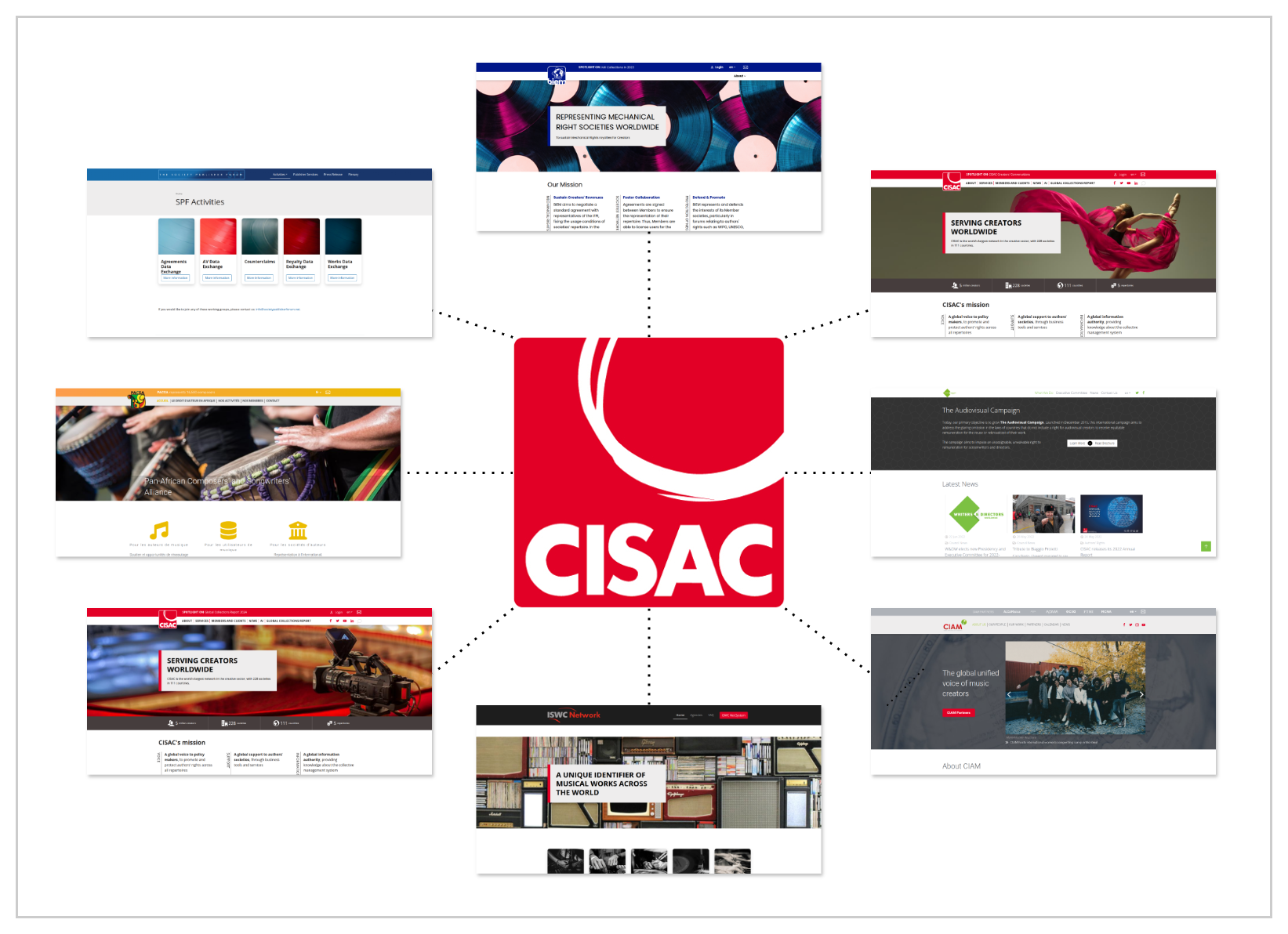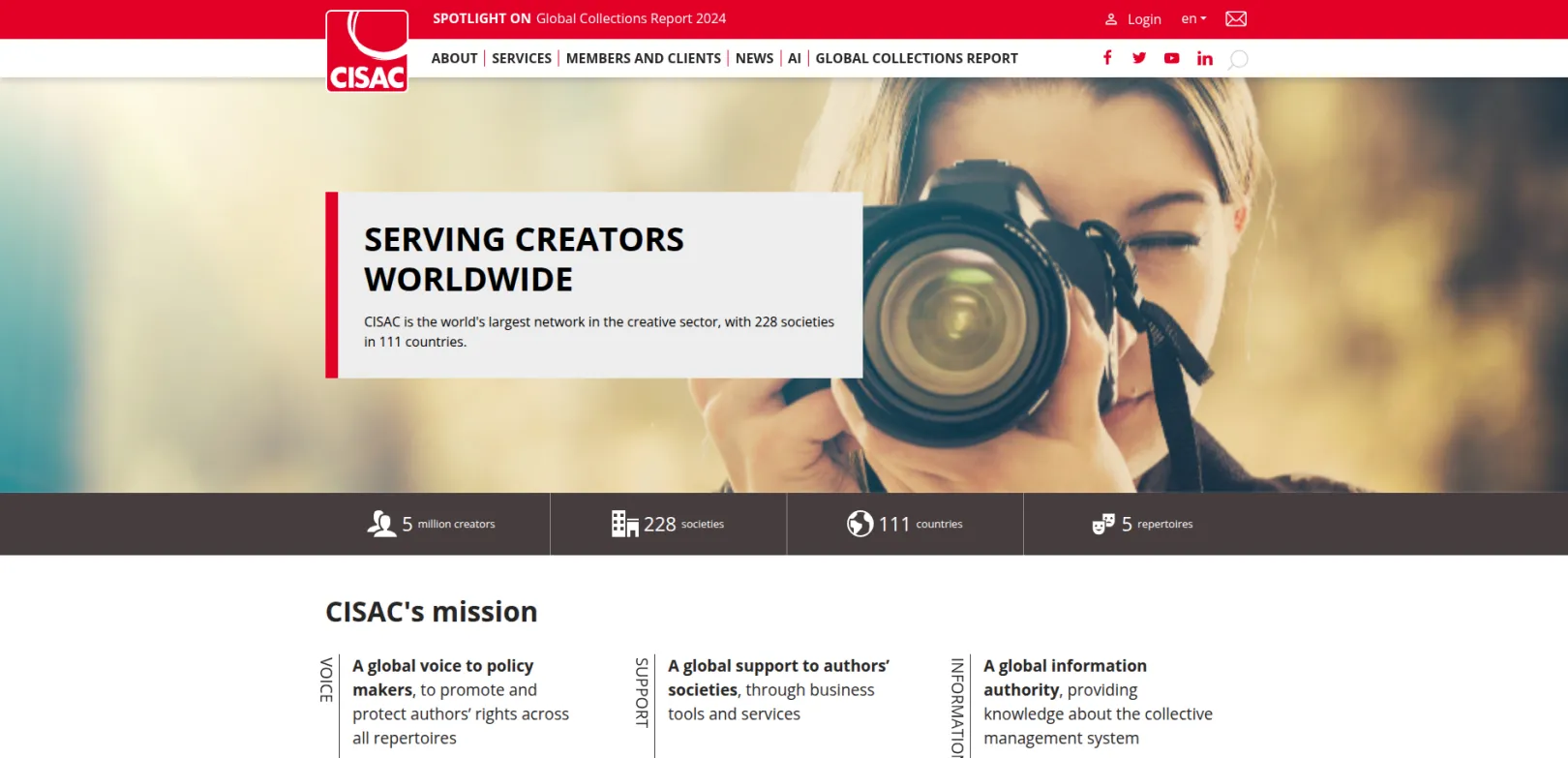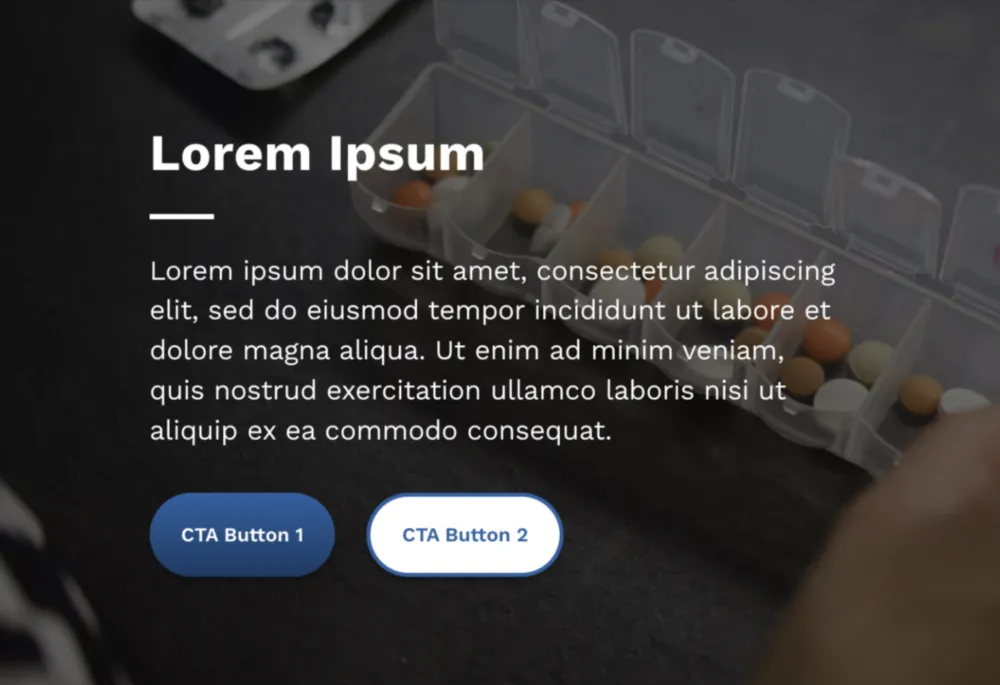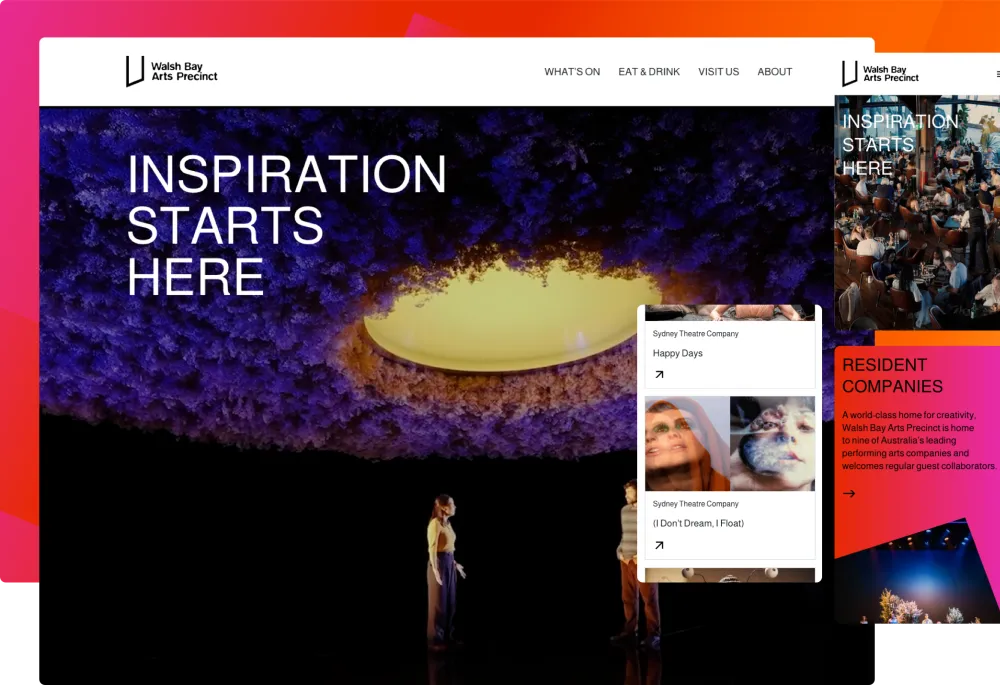Sector(s)
Team Members
CISAC (International Confederation of Societies of Authors and Composers) is the world’s leading network of authors’ rights societies, dedicated to protecting the rights and promoting the interests of creators across the globe. Founded in 1926, CISAC represents over 230 collective management organisations in more than 120 countries, spanning music, audiovisual, visual arts, drama, and literature.
CISAC required a replacement for their main platform and several fragmented satellite sites, based in eZ Publish and WordPress. A new platform that could efficiently handle several distinct websites, update an outdated design, and improve user experience and site structure.
As an umbrella organisation for multiple related entities, it is essential that the new platform can handle several distinct websites efficiently. This includes migrating several smaller satellite sites to the same new platform as the main site, in order to streamline management and reduce complexity.
The project's primary goals were therefore:
- Modernisation: update the overall design and improve user experience and site structure.
- Multi-site capability: implement a new platform capable of easily managing several distinct websites.
- Consolidation and efficiency: migrate four smaller satellite sites onto the new unified platform to facilitate management and reduce complexity.
These goals can be expresed as:
- Enhanced UX and communication: the previous site suffered from an outdated design and a cumbersome structure, hindering effective communication and navigation for users trying to access CISAC's key information and messages.
- Modernisation and best practices: update the website to align with current industry standards and practices regarding content editing and presentation.
- Brand integrity: maintaining a consistent core brand identity across multiple, distinct satellite websites was a critical requirement, balancing global recognition with individual site autonomy.
- Improve operational efficiency by implementing a content management system (CMS) that enables CISAC staff to publish information in a simpler, more efficient, reliable and faster manner. There was also a need to simplify the future creation and management of new websites.
- Facilitate the future creation of new websites that adhere to the aesthetic and technical standards set by the platform.
- Performance and satisfaction: the former platforms did not deliver the expected performance or accessibility, potentially leading to user dissatisfaction. Additionally, the new platform allowed to significantly improve editor satisfaction.
- An easy to maintain platform as Metadrop is also hosting the project
Additionally, this website meets some of the standard requirements that are probably essential for any modern website: cross-browser compatibility, no plug-in dependency, a responsive design and multilingual support. In this case, the site must be available in French, English and Spanish.
The platform also provides user roles for different tasks and a content approval workflow. This workflow enables content submitted by internal staff or external contributors to be validated internally before publication.

What makes this project remarkable?
There are two aspects that make this project stand out:
Firstly, we created a common front-end base of reusable and easily modifiable content blocks from a single site. These blocks can be used to quickly and easily customise each of the different sister sites while maintaining a clearly distinguishable corporate identity.
Secondly, we migrated pre-existing content from two different CMSs to Drupal: WordPress and eZ Publish. While migrations from WordPress were straightforward, those from eZ Publish were particularly challenging as the fields that comprise the main content were encoded in XML rather than HTML. A recursive algorithm was required to convert them to a markup language that could be utilised by Drupal.
Problems solved
- Maintaining the brand coherence and look and feel in several sites thanks to the common frontend base of reusable and easily modifiable content components was developed from a single Drupal installation. This enabled all satellite sites to share a consistent corporate line while allowing each site to modify these components as needed, enabling unique identities while upholding the overarching CISAC brand.
- Providing an editorial workflow to ease and improve the content publication process. The CMS supports defined user roles to manage permissions and workflows effectively. A content approval workflow ensures internal validation prior to publication, improving content quality and control. The new platform now facilitates the efficient creation and management of additional websites.
- A complex migration of content from the two disparate CMS types that existed was completed, allowing valuable information accumulated over the years to be preserved and made accessible in the new infrastructure.
- A custom login system was developed to integrate with CISAC's existing authentication for members, providing secure, permission-based access to restricted content.
- A custom module also integrated the cookie system with OneTrust for compliance and transparency.
Outcome
8 sites migrated
2 migration sources
- Multisite platform: currently 8 sites in production
- Multilanguage: with a few exceptions, most of the sites are available in French, English and Spanish.
- Migration of content from two different CMSs
- Great performance/accessibility/SEO.
- All sites share a common theme with a set of components that are shared across al sites.
- Every site can modify these components if needed, allowing that every site can have its own identity and be completely different from the others.
- Faceted content search.
- Usage of next-gen image formats to allow less data consumption and faster downloads.
Drupal was chosen as the foundational CMS for CISAC's digital transformation due to its inherent capabilities that directly addressed the project's complex requirements for a global, multifaceted organisation.
- Flexibility and customisation: Drupal's modularity allowed for precise tailoring, creating custom content structures and user roles that matched CISAC's unique operational needs. This delivered a bespoke digital experience.
- Scalability: the platform needed to handle significant growth in content and users. Drupal's enterprise-grade architecture ensured it could manage increased traffic and data efficiently.
- Performance and speed: a fast and responsive website was crucial for user satisfaction. Drupal's design delivered a high-performing site, improving accessibility and engagement for a global audience.
- Multisite management: consolidating disparate websites was a primary goal. Drupal's multisite capabilities enabled efficient management of multiple distinct sites from a single codebase.
- Multilingual support: given CISAC's international reach, robust multilingual features were essential. Drupal offered comprehensive tools for content and interface translation in English, French, and Spanish.

Technical Specifications
Drupal version:
Key modules/theme/distribution used:
Components
The Components module is selected to implement component-based theming, enabling the creation of reusable UI elements that ensure design consistency across the site. It facilitates a modern development workflow by decoupling frontend templates from backend logic, improving maintainability and accelerating theming processes.
Migrate Plus
This module extends Drupal's core migration capabilities to handle complex data imports from diverse sources (e.g., legacy databases, APIs, or CSV files). It is employed to automate content transitions, support data transformation workflows, and ensure structural integrity during site upgrades or consolidations.
Paragraphs
Paragraphs provides structured content modelling through component customisation (e.g., text galleries, CTAs), granting editorial teams flexibility in page composition while enforcing design standards. Its implementation promotes content re-usability and scalability for dynamic content types.
WebP
Chosen for performance optimisation, this module automatically converts uploaded images to the WebP format, reducing file sizes by approximately 30%. This enhancement decreases page load times, conserves bandwidth, and improves Core Web Vitals metrics for superior user experience.
Xray Audit
This auditing tool monitors site integrity by scanning for compliance risks (e.g., accessibility gaps, security vulnerabilities). Its inclusion supports governance objectives, ensuring adherence to regulatory standards and maintaining content quality through automated diagnostics.





